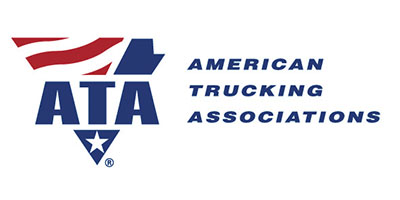New ATA report takes a deep dive into the ongoing truck driver shortage

Anyone that wakes up each day in a logistics job that centers around moving freight is more than aware of the fact that there is a significant truck driver shortage. That is nothing new; in fact, it is far from it.
But that does not mean the driver shortage is viewed as a “whistle by the graveyard” or “nothing to see here” approach. In fact, it is and needs to be the opposite. This comes into full view when taking a look at a report issued by the American Trucking Associations (ATA), entitled “Truck Driver Shortage Analysis 2017,” which takes a deep dive into the current driver shortage situation, with analysis on where things may be headed and what needs to happen to prevent a bad situation from becoming even worse down the road.
The ATA report, which was authored by ATA Chief Economist & Senior Vice President Bob Costello, noted that from 2015 to 2016 the driver shortage actually declined from 45,000 to 36,500. While that is encouraging, future numbers may not be as much, though, due to multiple factors outlined in-depth in the report, including: an aging driver workforce; lifestyle issues; and regulatory challenges, among others.
So, what about those future numbers? You may want to cover your eyes, as they are not pretty. According to the ATA, the driver shortage is projected to hit 50,000 by the end of 2017, with the possibility, if things remain the same, that the number could exceed 174,000 by 2026.
Costello pulled no punches in comments accompanying the report in an ATA statement.
“In addition to the sheer lack of drivers, fleets are also suffering from a lack of qualified drivers, which amplifies the effects of the shortage on carriers,” Costello said. “This means that even as the shortage numbers fluctuate, it remains a serious concern for our industry, for the supply chain and for the economy at large. We experienced a ‘freight recession,’ last year, which eased the pressure on the driver market. Now that freight volumes accelerating again, we should expect to see a significant tightening of the driver market.”
While acknowledging that this is a major issue, Costello noted that carriers are by no means turning a blind eye to it, as they are being proactive to make a bad situation better.
This is happening, he explained, in the form of pay increases for drivers along with offering other incentives, fleets working to improve both the image and lifestyle of truck drivers, policy efforts focused on lowering the driver age as part of a graduated licensing system, and easing the transition for veterans to get into the driver’s seat.
The projected shortfall of 50,000 drivers by the end of this year would stand as “the highest level on record,” according to the report. This is due to a pairing of recovering freight volumes and the transition to electronic logging devices to track drivers’ hours.
Perhaps one of the most telling stats included in the report is that 70.6% of freight tonnage moves on U.S. highways, as per the ATA’s Freight Transportation Forecast 2017 to 2028, which was released earlier this year. Another stat is that 43% of trucking’s operational costs are allocated towards driver compensation and stands as the largest operational cost for a motor carrier.
Costello also wrote “as volumes increase, the existing driver pool is only more strained.” Could that be any more spot on?
Not to be overlooked is the quality of candidate either, with the report explaining that the current shortage seems even worse to carriers than the current figures suggest because of a quality versus quantity issue.
It said that this is because many carriers have strict hiring criteria based on driving history, experience, and other factors. This becomes further magnified through the ATA’s Benchmarking Guide for Driver Recruitment & Retention, which cites how in 2015 88% of fleets indicated they were getting enough candidates but the majority were not qualified, something which ATA says has not likely changed since then either.
When it comes to the seemingly endless truck driver shortage, it feels like things will never change. But here is the thing: they can and really need to or we will all be feeling the collective pain. The ATA does a great job in laying out the facts, projections, and potential solutions, too. Do yourself a favor, take some time to read this analysis and become part of the solution, not part of the continuing problem.

Article Topics
Blogs News & Resources
Latest in Materials Handling
KION Group’s board extends CEO Rob Smith’s contract by five years UniCarriers Forklift joins Quality Equipment in opening celebration of new location Largest Automate on record opens in Chicago on Monday May 6th April manufacturing output recedes after growing in March Carolina Handling celebrates anniversary with 58 for 58 giveaway Q1 sees a solid finish with strong U.S.-bound import growth, notes S&P Global Market Intelligence AutoStore to launch U.S. headquarters in greater Boston region More Materials HandlingAbout the Author
Subscribe to Materials Handling Magazine

Find out what the world's most innovative companies are doing to improve productivity in their plants and distribution centers.
Start your FREE subscription today.
April 2024 Modern Materials Handling

Latest Resources










